
Lois Ann Lowry is an American writer. She is the author of several books for children and young adults, including The Giver Quartet, Number the Stars, and Rabble Starkey. She is known for writing about difficult subject matters, dystopias, and complex themes in works for young audiences.
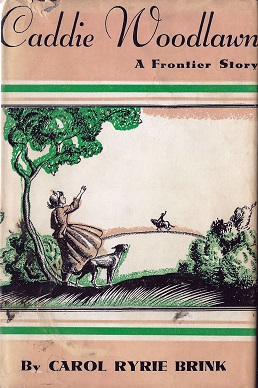
Caddie Woodlawn is a children's historical fiction novel by Carol Ryrie Brink that received the Newbery Medal in 1936 and a Lewis Carroll Shelf Award in 1958. The original 1935 edition was illustrated by Newbery-award-winning author and illustrator Kate Seredy. Macmillan released a later edition in 1973, illustrated by Trina Schart Hyman.
Cynthia Voigt is an American writer of books for young adults dealing with various topics such as adventure, mystery, racism and child abuse. Her first book in the Tillerman family series, Homecoming, was nominated for several international prizes and adapted as a 1996 film. Her novel Dicey's Song won the 1983 Newbery Medal.

Kate Seredy was an American writer and illustrator of children's books. She won the Newbery Medal once, the Newbery Honor twice, the Caldecott Honor once, and the Lewis Carroll Shelf Award. Most of her books were written in English, which was not her first language. Seredy seems to be unknown in her native Hungary, despite the fact that her story of the Good Master, and the sequel set in World War I are intensely about Hungary.
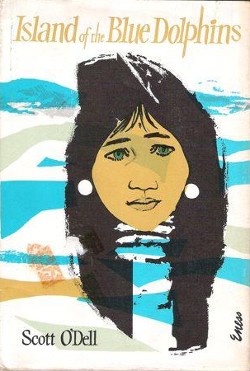
Island of the Blue Dolphins is a 1960 children's novel by American writer Scott O'Dell, which tells the story of a girl named Karana, who is stranded alone for years on an island off the California coast. It is based on the true story of Juana Maria, a Nicoleño Native American left alone for 18 years on San Nicolas Island during the nineteenth century.
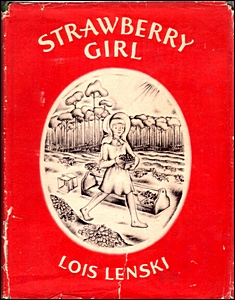
Strawberry Girl is a Newbery Medal winning novel written and illustrated by Lois Lenski. First published in 1945, this realistic fiction children's book, set among the "Crackers" of rural Florida, is one in Lenski's series of regional novels.

Eleanor Estes was an American children's writer and a children's librarian. Her book Ginger Pye, for which she also created illustrations, won the Newbery Medal. Three of her books were Newbery Honor Winners, and one was awarded the Lewis Carroll Shelf Award. Estes' books were based on her life in small-town Connecticut in the early 1900s.

Lois Lenore Lenski Covey was a Newbery Medal-winning author and illustrator of picture books and children's literature. Beginning in 1927 with her first books, Skipping Village and Jack Horner's Pie: A Book of Nursery Rhymes, Lenski published 98 books, including several posthumously. Her work includes children's picture books and illustrated chapter books, songbooks, poetry, short stories, her 1972 autobiography, Journey into Childhood, and essays about books and children's literature. Her best-known bodies of work include the "Mr. Small" series of picture books (1934–62); her "Historical" series of novels, including the Newbery Honor-winning titles Phebe Fairchild: Her Book (1936) and Indian Captive: The Story of Mary Jemison (1941); and her "Regional" series, including Newbery Medal-winning Strawberry Girl (1945) and Children's Book Award-winning Judy's Journey (1947).

The Willow pattern is a distinctive and elaborate chinoiserie pattern used on ceramic tableware. It became popular at the end of the 18th century in England when, in its standard form, it was developed by English ceramic artists combining and adapting motifs inspired by fashionable hand-painted blue-and-white wares imported from Qing dynasty China. Its creation occurred at a time when mass-production of decorative tableware, at Stoke-on-Trent and elsewhere, was already making use of engraved and printed glaze transfers, rather than hand-painting, for the application of ornament to standardized vessels.

Elizabeth Jane Coatsworth was an American writer of fiction and poetry for children and adults. She won the 1931 Newbery Medal from the American Library Association award recognizing The Cat Who Went to Heaven as the previous year's "most distinguished contribution to American literature for children." In 1968 she was a highly commended runner-up for the biennial international Hans Christian Andersen Award for children's writers.

Adam of the Road is a novel by Elizabeth Janet Gray Vining. Vining won the Newbery Medal for excellence in American children's literature in 1943 from the book. Set in thirteenth-century England, the book follows the adventures of a young boy, Adam. After losing his spaniel and minstrel father, Adam embarks on a series of escapades throughout medieval England. The book is illustrated by Robert Lawson.

Elizabeth Wright Enright Gillham was an American writer of children's books, an illustrator, writer of short stories for adults, literary critic and teacher of creative writing. Perhaps best known as the Newbery Medal-winning author of Thimble Summer (1938) and the Newbery runner-up Gone-Away Lake (1957), she also wrote the popular Melendy quartet. A Newbery Medal laureate and a multiple winner of the O. Henry Award, her short stories and articles for adults appeared in many popular magazines and have been reprinted in anthologies and textbooks.

Gone-Away Lake is a children's novel written by Elizabeth Enright, illustrated by Beth and Joe Krush, and published by Harcourt in 1957. It was a runner-up for the annual Newbery Medal and was named to the Lewis Carroll Shelf Award list in 1970. It tells the story of cousins who spend a summer exploring and discover a lost lake and the two people who still live there.
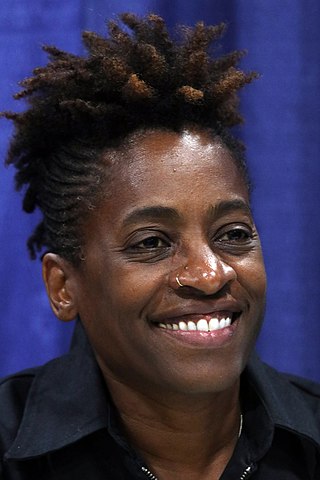
Jacqueline Woodson is an American writer of books for children and adolescents. She is best known for Miracle's Boys, and her Newbery Honor-winning titles Brown Girl Dreaming, After Tupac and D Foster, Feathers, and Show Way. After serving as the Young People's Poet Laureate from 2015 to 2017, she was named the National Ambassador for Young People's Literature, by the Library of Congress, for 2018 to 2019. Her novel Another Brooklyn was shortlisted for the 2016 National Book Award for Fiction. She won the Astrid Lindgren Memorial Award in 2018. She was named a MacArthur Fellow in 2020.

The Middle Moffat by Eleanor Estes is the second novel in the children's series known as The Moffats. Published in 1942, it was a Newbery Honor book. The title comes from Janey Moffat, who feels a little lost among her three siblings. Being neither the oldest or youngest, she decides to become the 'Middle Moffat' to help herself feel more important. The Moffats is set in small town Cranbury, Connecticut during World War I.
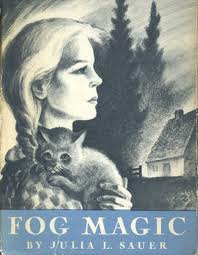
Fog Magic by Julia L. Sauer is a children's fantasy novel set in Nova Scotia. It was a Newbery Honor recipient in 1944. Fog Magic tells the story of a young girl who, on foggy days, travels back in time to enter the past life of an abandoned village. Lynd Ward illustrated the book, which was published by Viking.
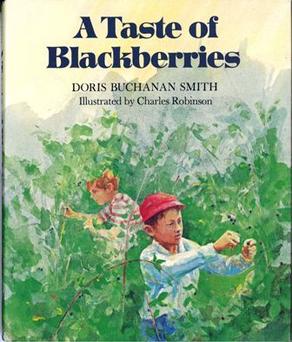
A Taste of Blackberries is a children's book by Doris Buchanan Smith.

Doris Gates was one of America's first writers of realistic children's fiction. Her novel Blue Willow, about the experiences of Janey Larkin, the ten-year-old daughter of a migrant farm worker in 1930s California, is a Newbery Honor book and Lewis Carroll Shelf Award winner. A librarian in Fresno, California, Gates lived and worked among the people described in her novels. She is also known for her collections of Greek mythology.
Julia Sauer was an American writer of children's fiction and librarian. Two of her books, Fog Magic and The Light at Tern Rock were among the annual Newbery Medal runners-up. Both are set in Canada, where Sauer frequently vacationed.
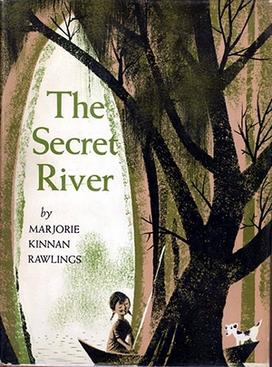
The Secret River is a children's fantasy novel by Marjorie Kinnan Rawlings, author of The Yearling. Published in 1955, The Secret River received a Newbery Honor Award. The first edition, illustrated by Caldecott Medal winner Leonard Weisgard, was issued after Rawlings' death. The book was revised and reissued in 2009 with illustrations by Caldecott Medalists Leo and Diane Dillon. The new edition received an international children's book design award in 2012. The Secret River is the only book Rawlings wrote specifically for children. The story of young Calpurnia, who goes on a quest to find a magical river and catch fish for her starving family and friends, it has two themes common in Rawlings' writing, the magic of childhood and the struggle of people to survive in a harsh environment.

















